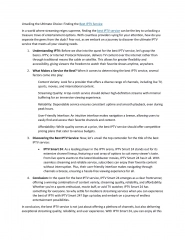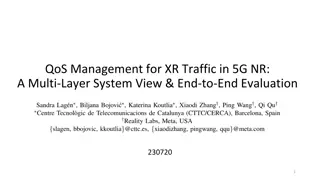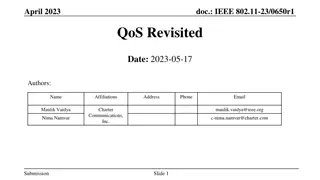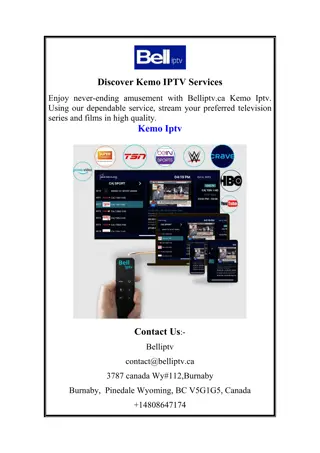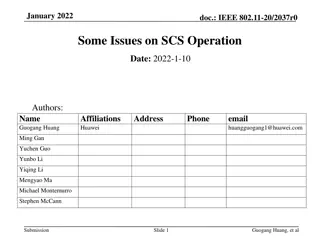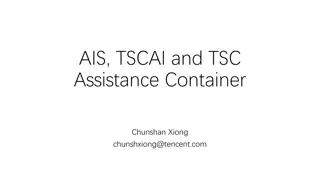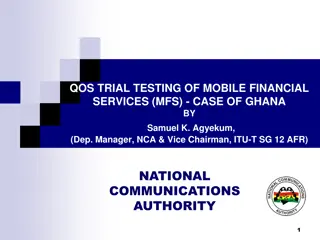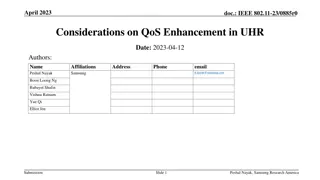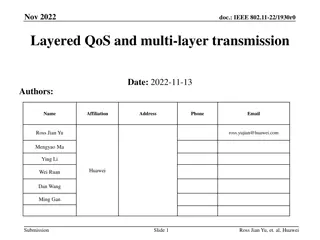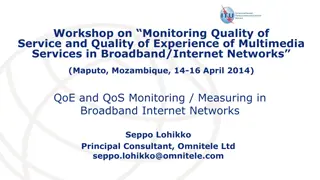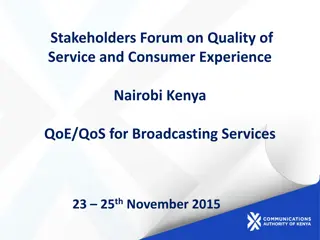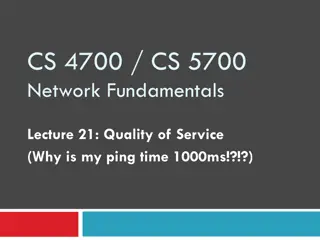Understanding Quality of Experience (QoE) and Quality of Service (QoS) for IPTV Services
Explore the concepts of QoE and QoS for IPTV services, including user requirements, important definitions, QoE dimensions, compression artifacts, and components affecting channel zapping time. Learn about clean audio, VoD trick modes, triple play services, and more in this informative collection.
Download Presentation

Please find below an Image/Link to download the presentation.
The content on the website is provided AS IS for your information and personal use only. It may not be sold, licensed, or shared on other websites without obtaining consent from the author. Download presentation by click this link. If you encounter any issues during the download, it is possible that the publisher has removed the file from their server.
E N D
Presentation Transcript
ITU Regional Standardization Forum For Africa Dakar, Senegal, 24-25 March 2015 QoE & QoS of Multimedia Services Joachim Pomy OPTICOM GmbH Germany consultant@joachimpomy.de 1
Recommendation G.1080 Quality of experience requirements for IPTV services user requirements for QoE for IPTV services defined from an end user perspective agnostic to network deployment architectures and transport protocols specified as end-to-end and information is provided on how they influence network transport and application layer behavior QoE requirements for video, audio, text, graphics, control functions and meta-data are provided 2
Important Definitions 3.2.1 channel zapping: The act of quickly changing from one channel to another. 3.2.2 clean audio: Audio track of an IPTV service with background sounds removed. 3.2.3 group of pictures: The group of pictures (GOP) is a group of successive pictures within a MPEG-coded film and/or video stream. Each MPEG-coded film and/or video stream consists of successive GOPs. From the MPEG pictures contained in it, the visible frames are generated. 3.2.4 triple play services: Services that include IPTV, VoIP, and Internet access. 3.2.5 VoD trick modes: Download and streaming video on demand (VoD) systems provide the user with a large subset of VCR functionality including pause, fast forward, fast rewind, slow forward, slow rewind, jump to previous/future frame, etc. These functions are usually referred to as "trick modes". 3
QoE dimensions QoE Objective Subjective Quality of Service Human Components Service billing Service factors Application factors Transport factors Emotions Experience Figure 5-1 QoE dimension 4
Components that contribute to channel zapping time TV FHR STB HG GWR IPTV head end IPTV channels Channel zap request IGMP leave for previous channel IGMP query IGMP leave IGMP delay IGMP query IGMP join to new channel Channel zapping time IGMP join IP multicast traffic Buffering delay Decoding delay G.1080(08)_F8-1 FHR GWR First Hop Router Gateway Router 8
Codecs II.1 This clause provides a non-inclusive list of video codecs for television applications. The following video codecs are used for television applications: H.262 (a.k.a. MPEG-2 Video); H.264 (a.k.a. MPEG-4 AVC or MPEG-4 Part 10); SMPTE 421M (a.k.a. VC-1, previously known as VC-9, the standardized version of Windows Media AVS. II.2 Audio codecs This clause provides a non-inclusive list of audio codecs for television applications. Most video service offerings (e.g., those using MPEG transport streams or similar) are capable of supporting more than one Example audio formats used for television applications are: MPEG audio layer II (also known as Musicam, used in DVB systems, and MPEG-1 audio layer 2); Dolby digital used in ATSC systems (formerly known as AC-3); NICAM 728 (European digital format for PAL); Advanced audio coding AAC (either MPEG-2 AAC or MPEG-4 AAC ([b-ISO/IEC 14496-3], Subpart 4)); MP3 (MPEG-1 Audio layer 3) used particularly for music content. Video codecs 9); 9
Any questions ? Contact: Consultant@joachimpomy.de 13



